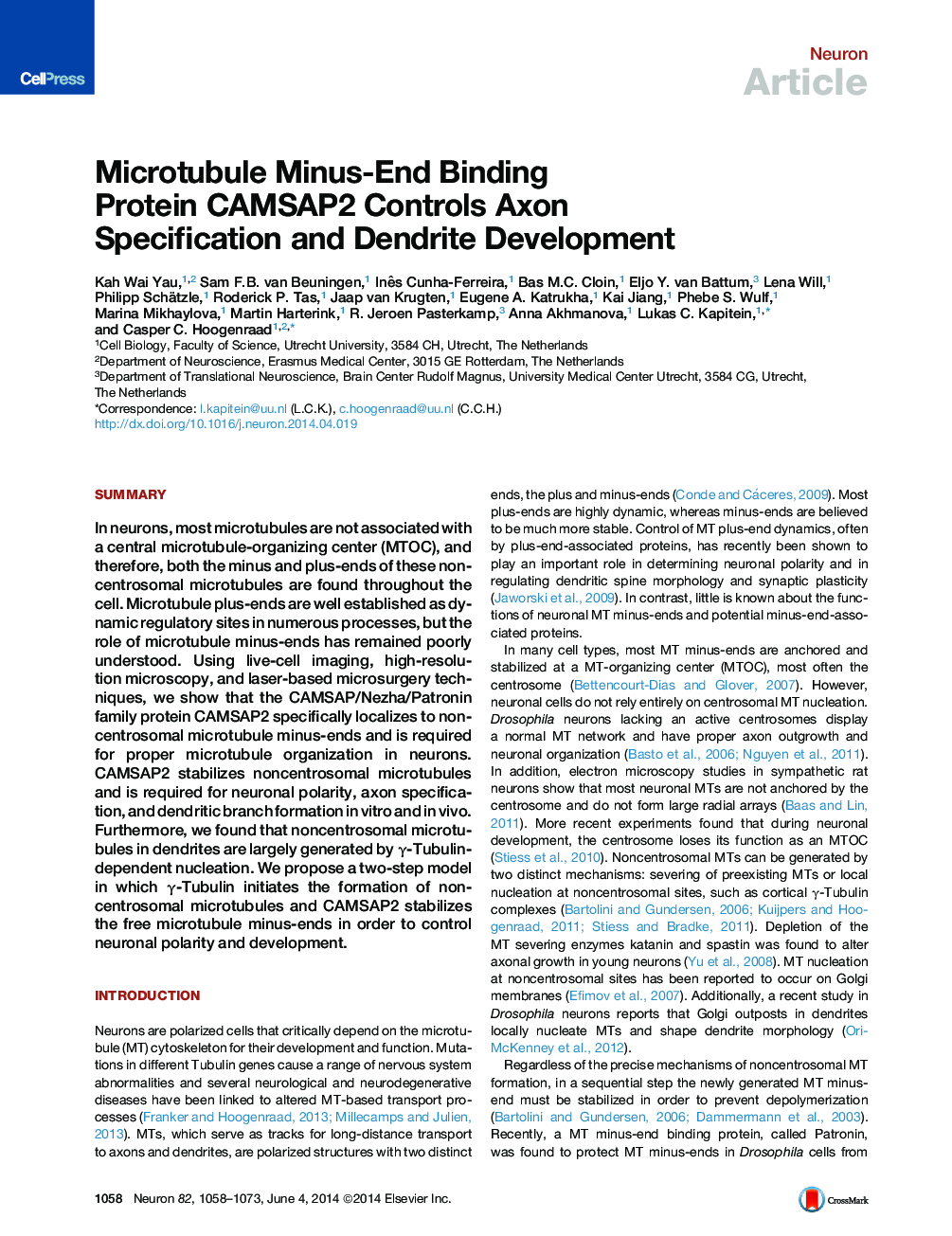| Article ID | Journal | Published Year | Pages | File Type |
|---|---|---|---|---|
| 4321058 | Neuron | 2014 | 16 Pages |
•CAMSAP2 labels microtubule minus-ends in cultured hippocampal neurons•CAMSAP2 is required to establish and maintain the neuronal microtubule network•CAMSAP2 is needed for axon specification and neuronal polarity in vitro and in vivo•CAMSAP2-dependent MT minus-end stabilization is important for dendrite development
SummaryIn neurons, most microtubules are not associated with a central microtubule-organizing center (MTOC), and therefore, both the minus and plus-ends of these noncentrosomal microtubules are found throughout the cell. Microtubule plus-ends are well established as dynamic regulatory sites in numerous processes, but the role of microtubule minus-ends has remained poorly understood. Using live-cell imaging, high-resolution microscopy, and laser-based microsurgery techniques, we show that the CAMSAP/Nezha/Patronin family protein CAMSAP2 specifically localizes to noncentrosomal microtubule minus-ends and is required for proper microtubule organization in neurons. CAMSAP2 stabilizes noncentrosomal microtubules and is required for neuronal polarity, axon specification, and dendritic branch formation in vitro and in vivo. Furthermore, we found that noncentrosomal microtubules in dendrites are largely generated by γ-Tubulin-dependent nucleation. We propose a two-step model in which γ-Tubulin initiates the formation of noncentrosomal microtubules and CAMSAP2 stabilizes the free microtubule minus-ends in order to control neuronal polarity and development.
